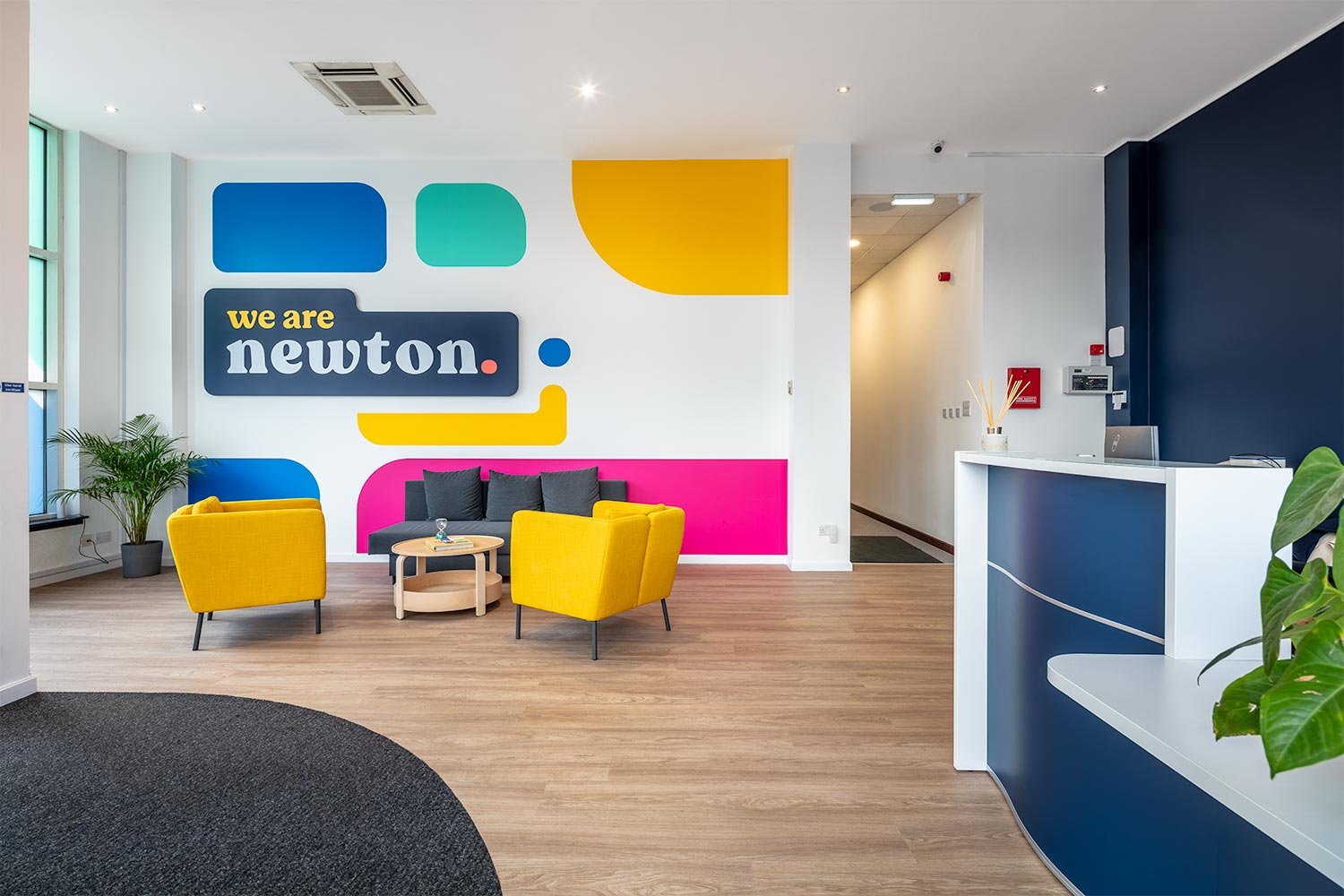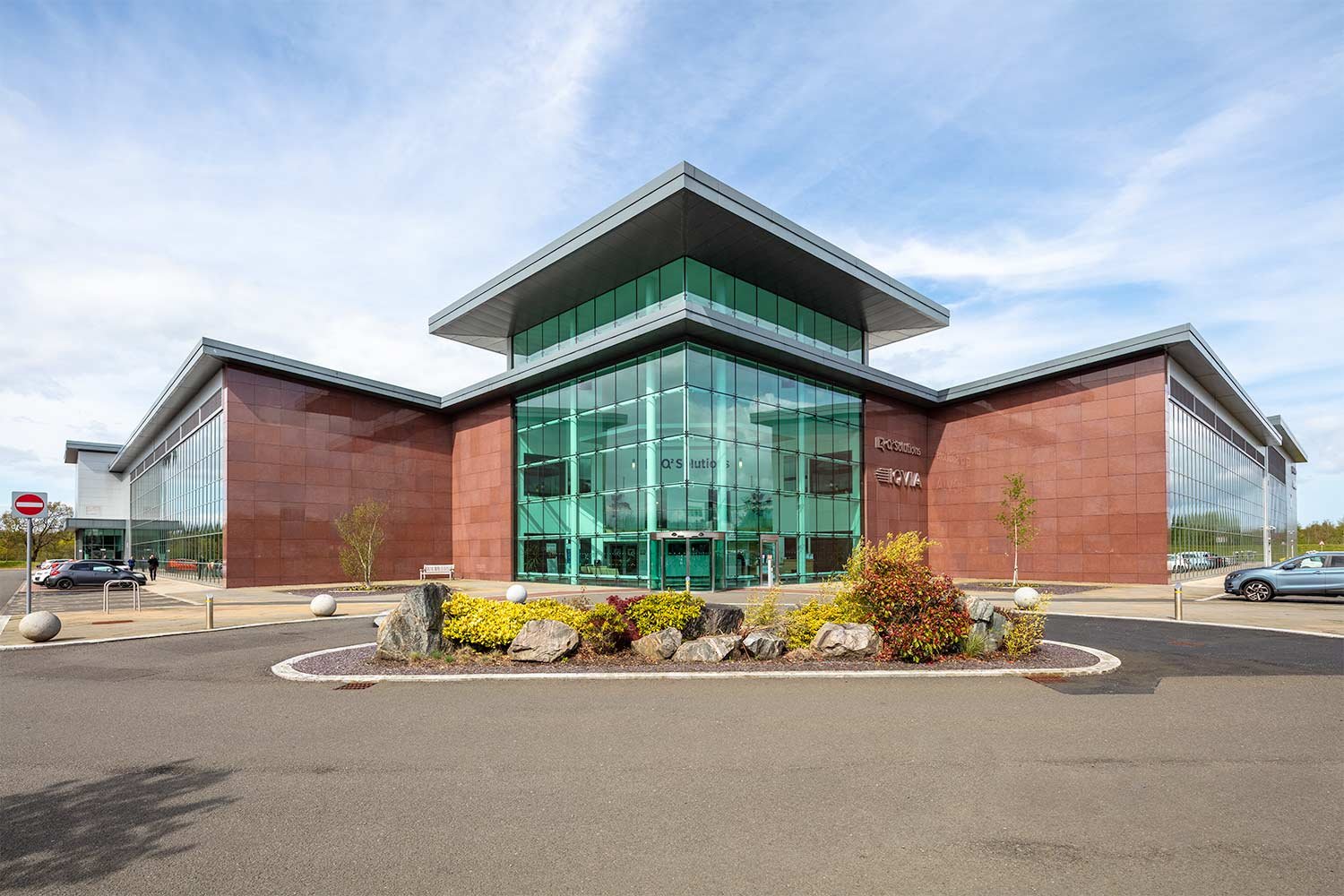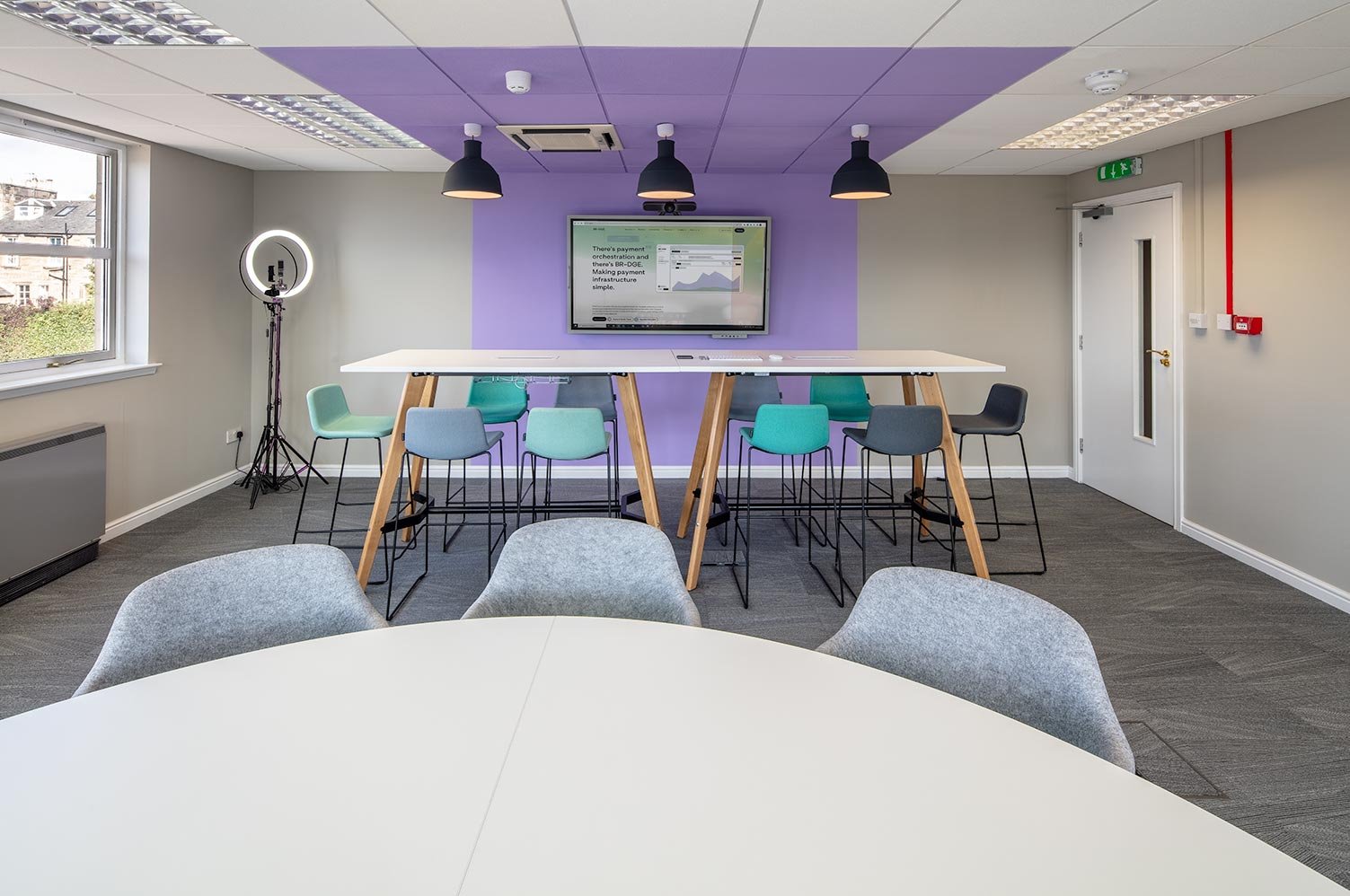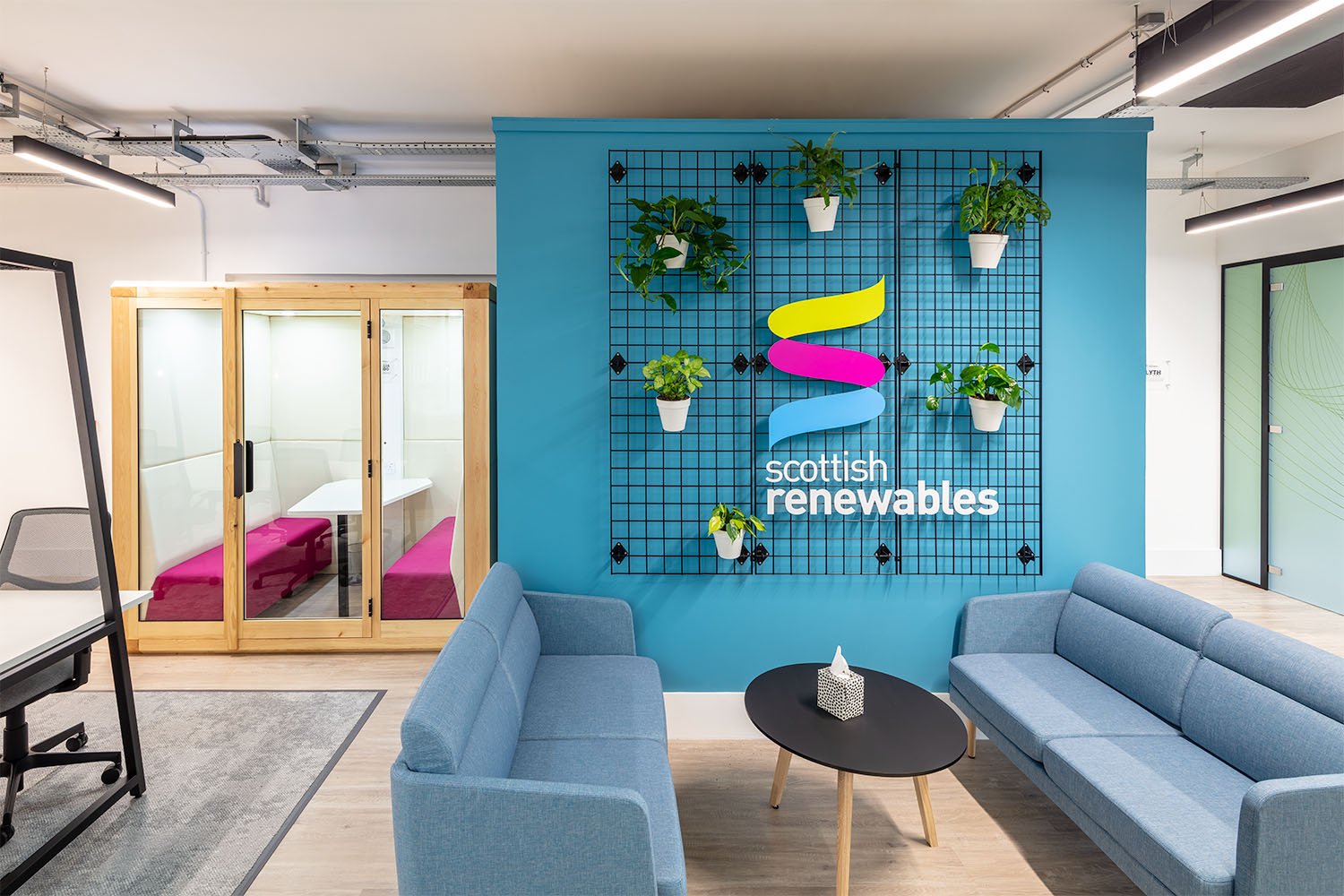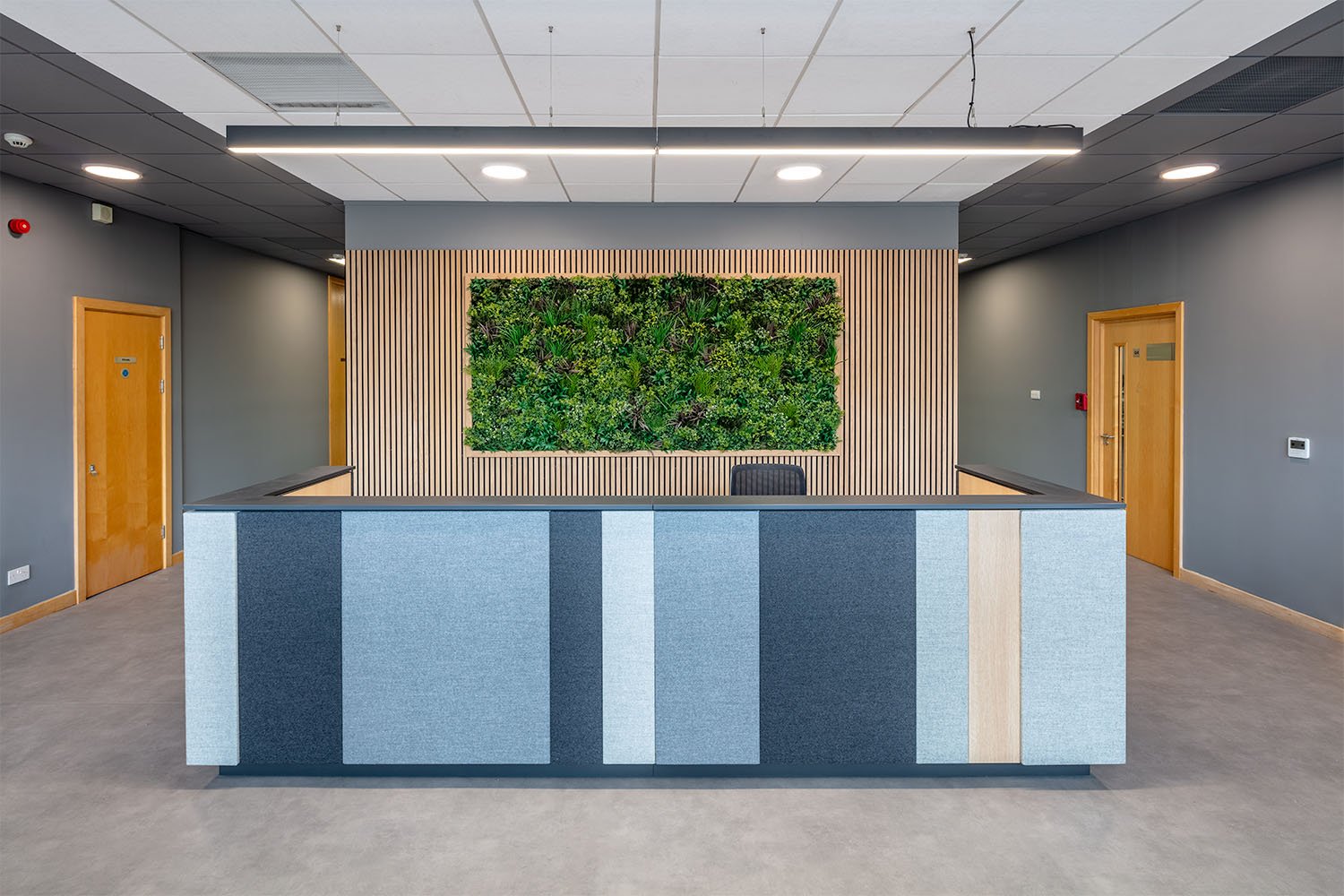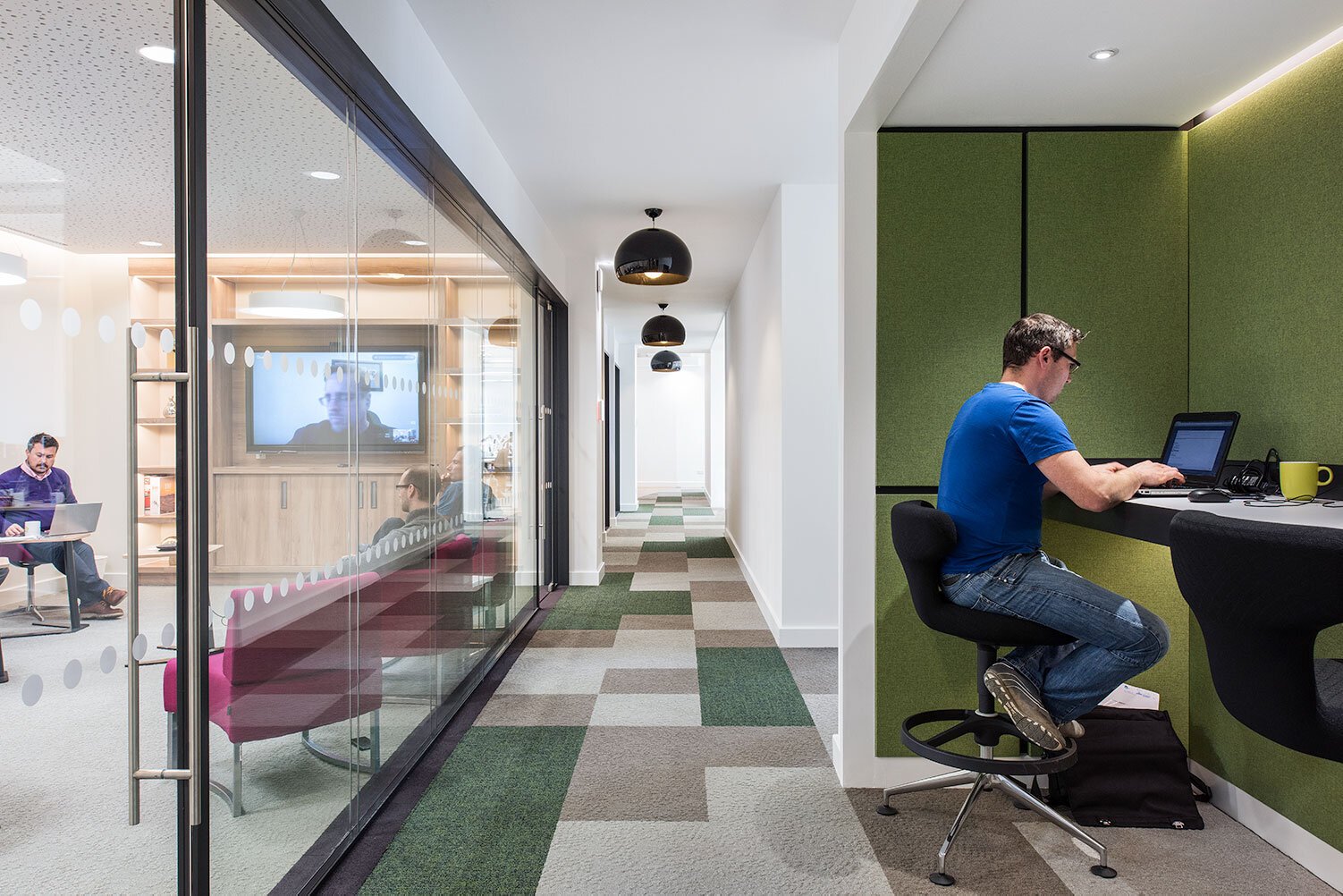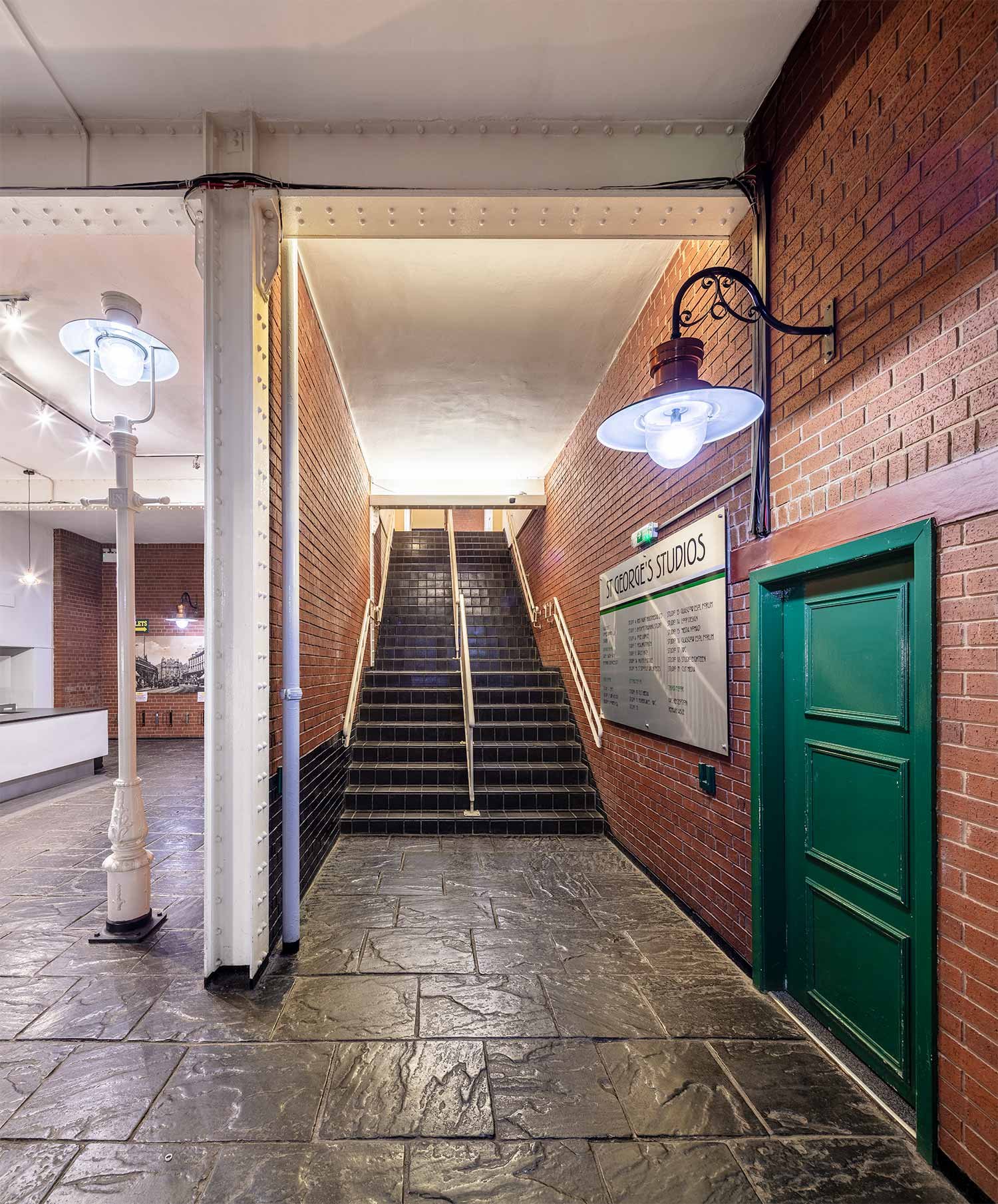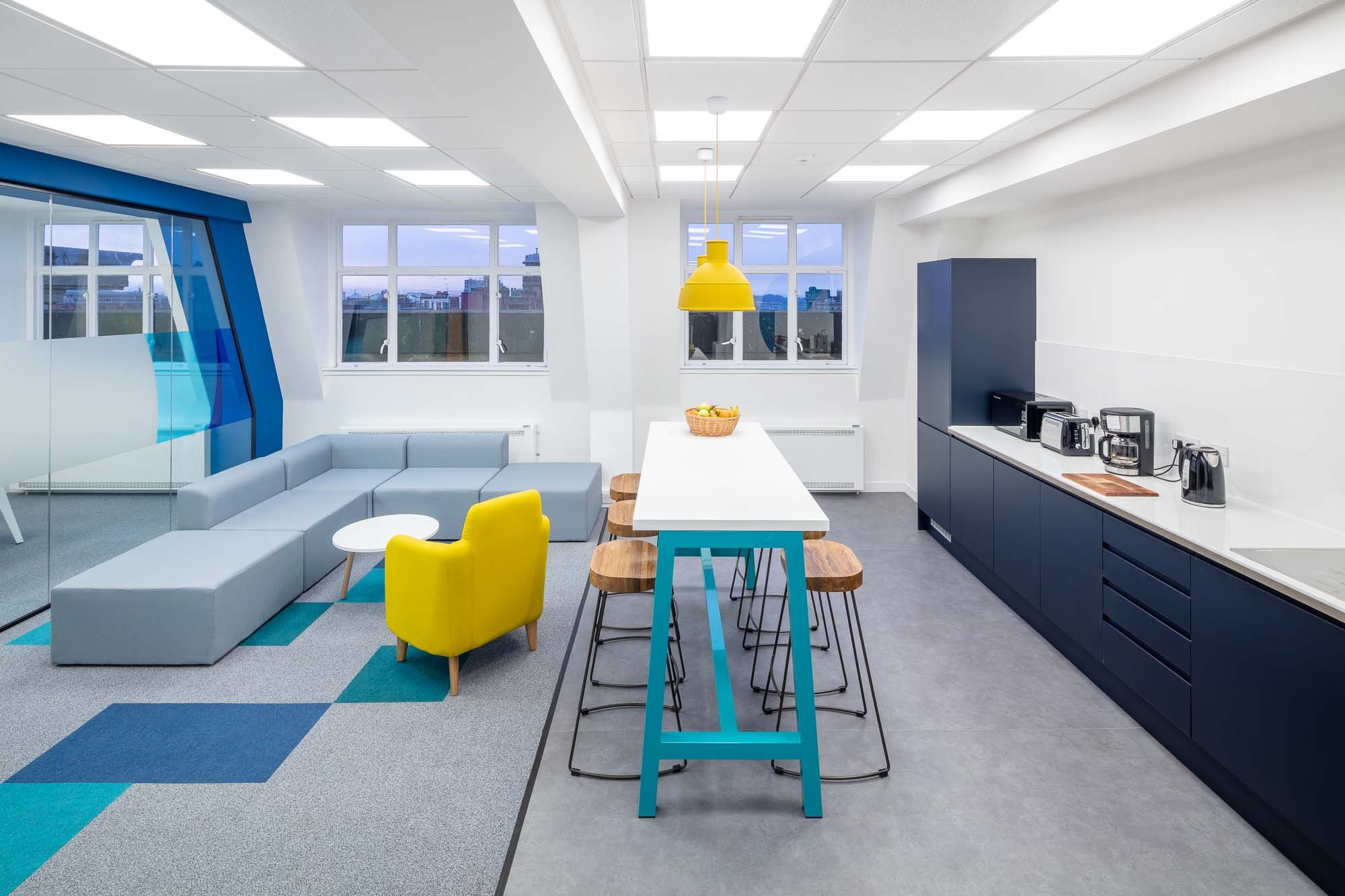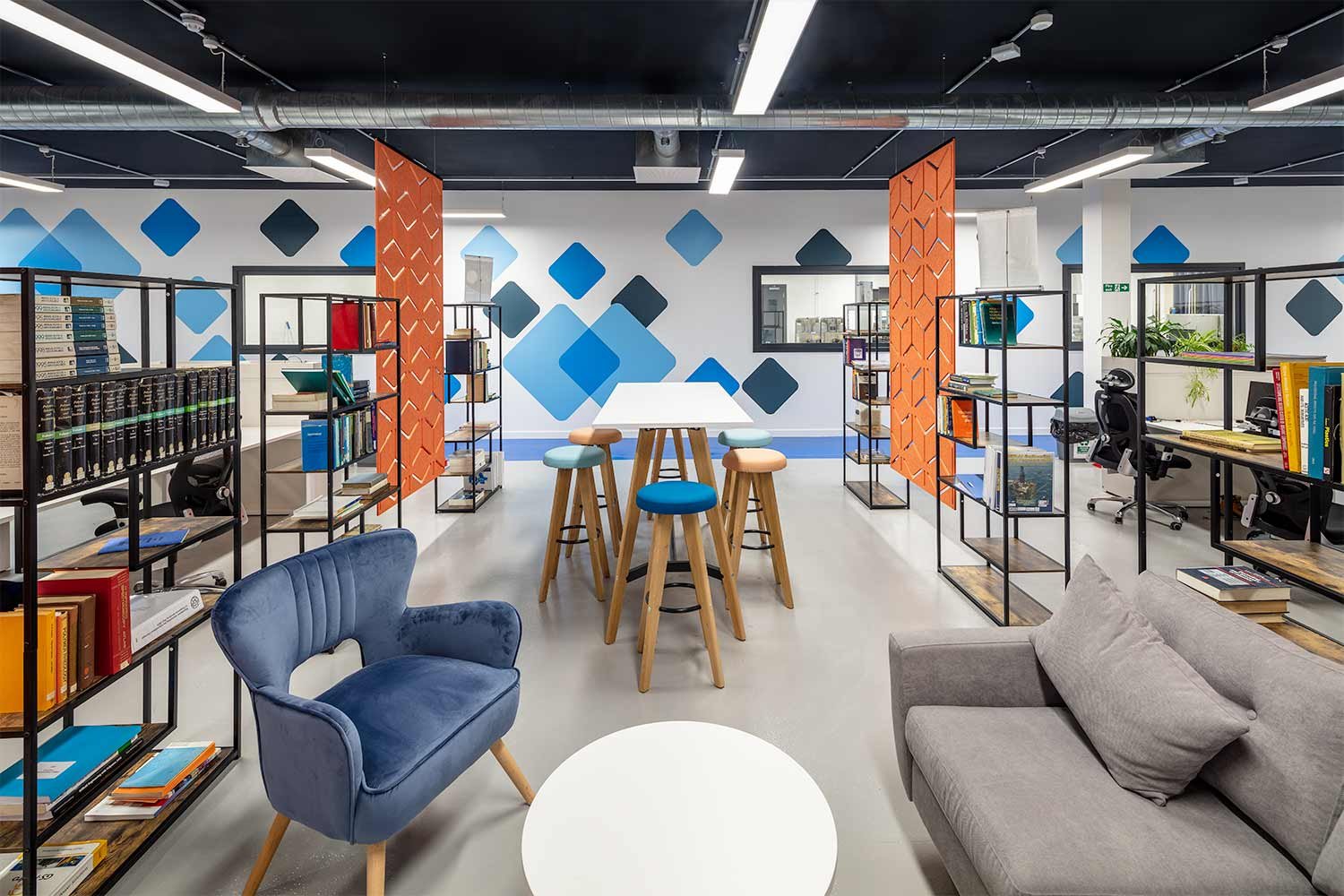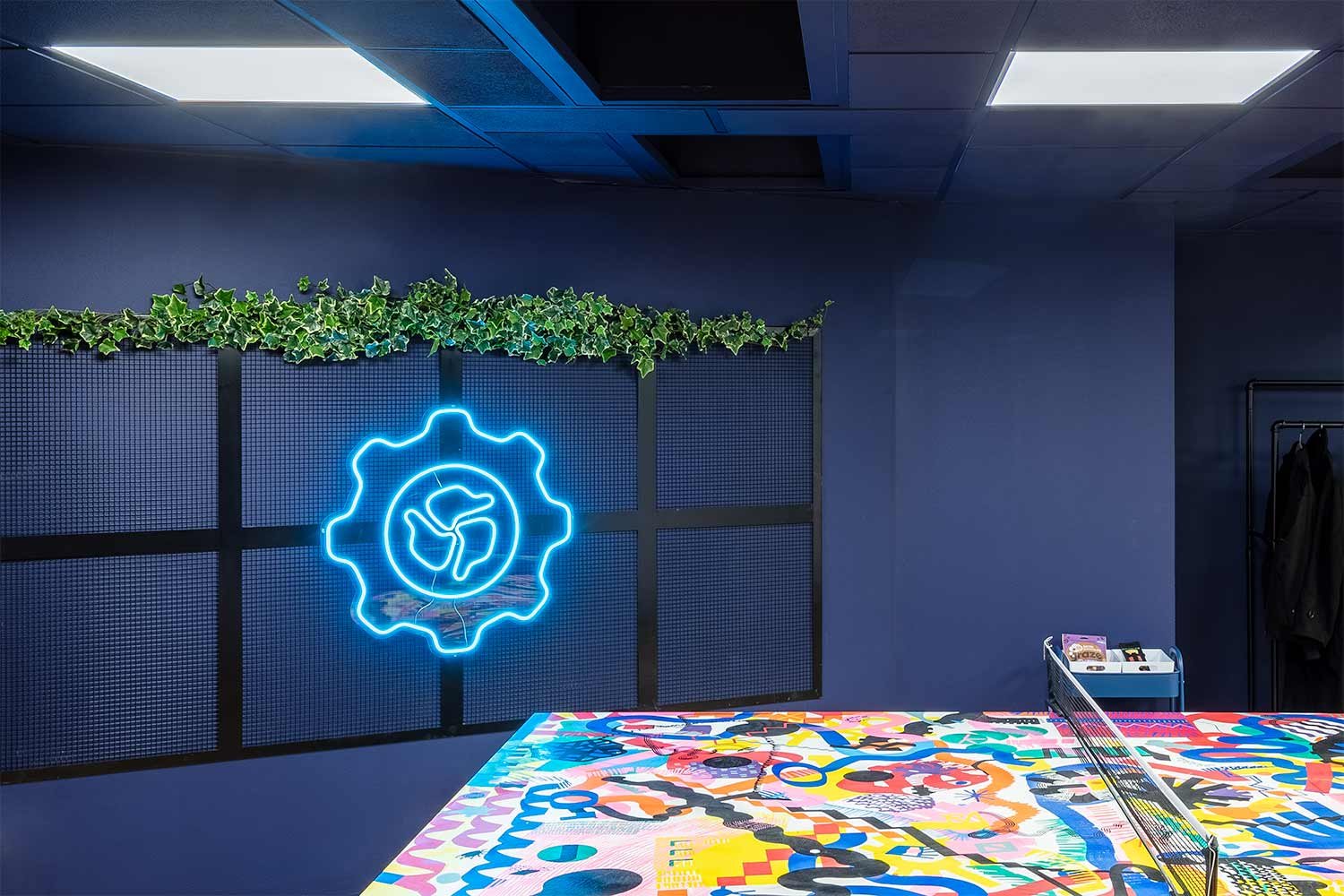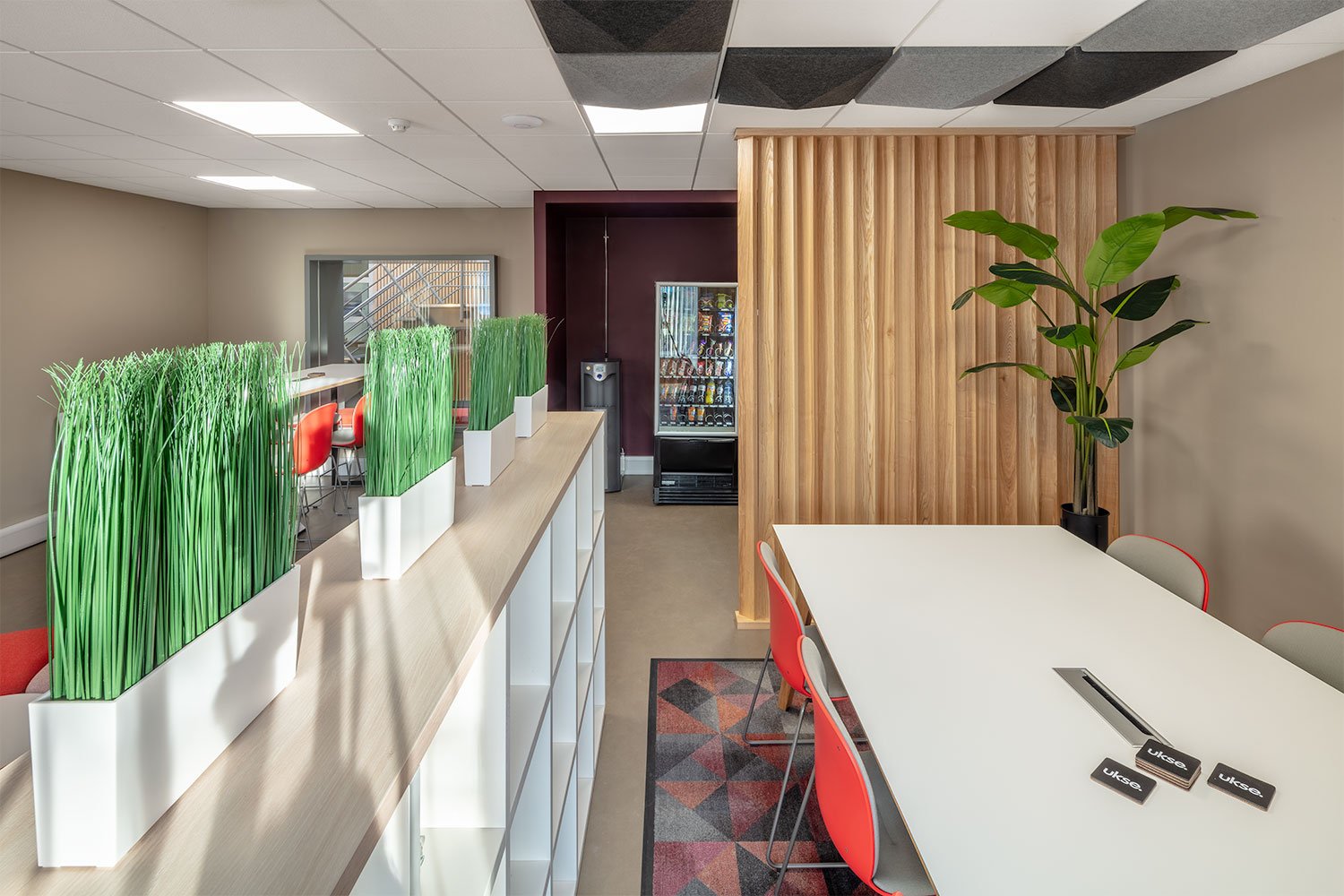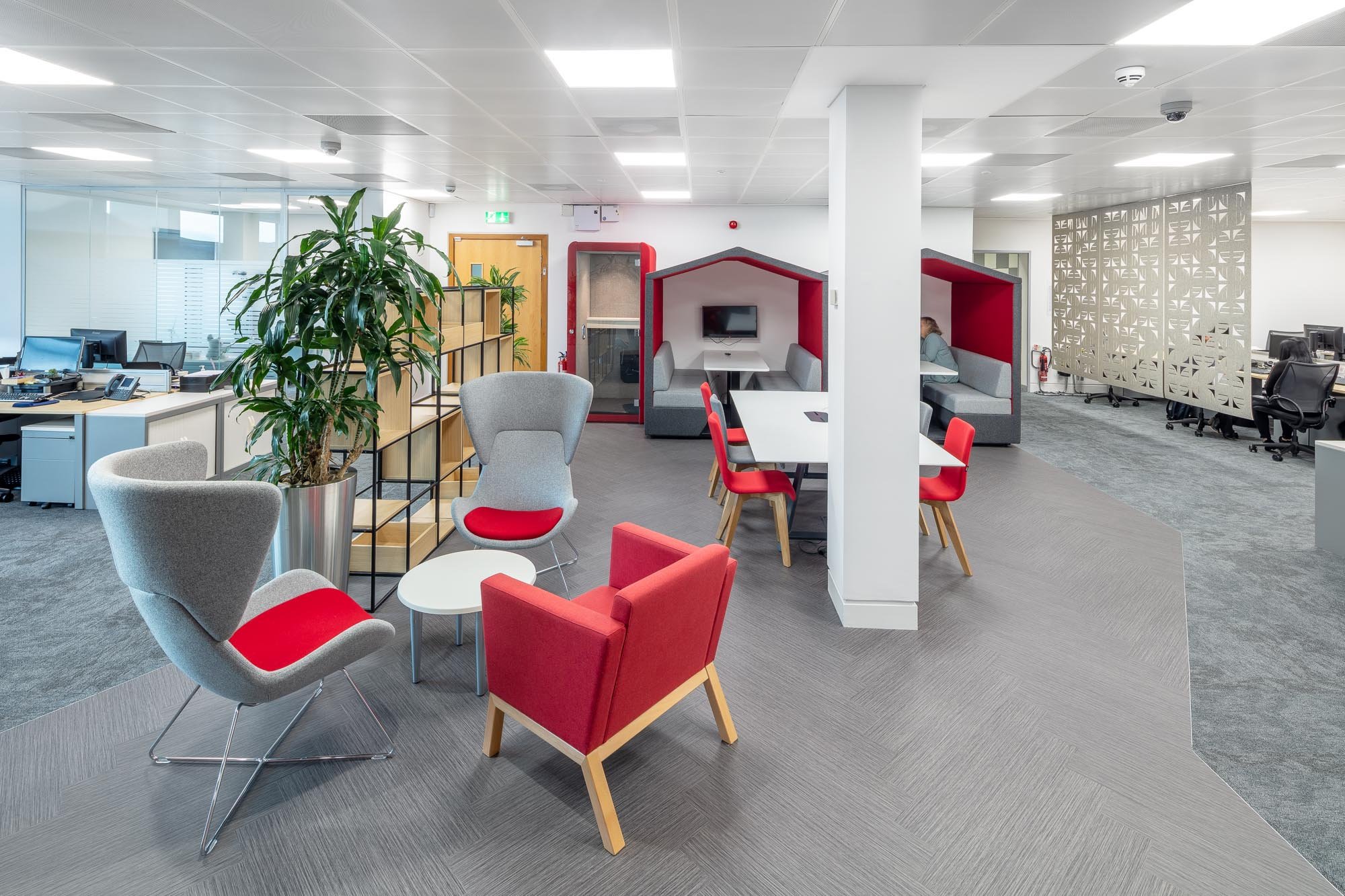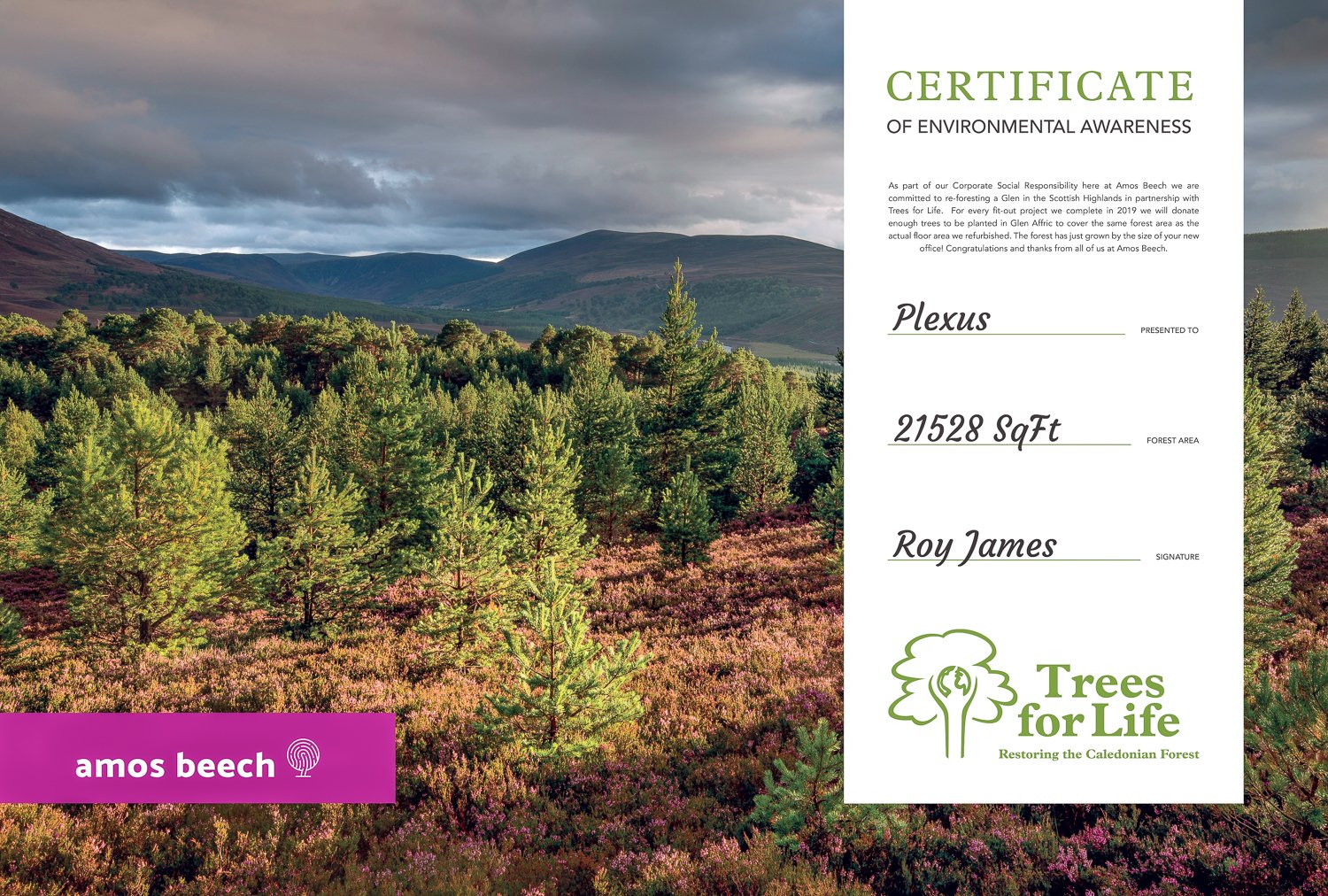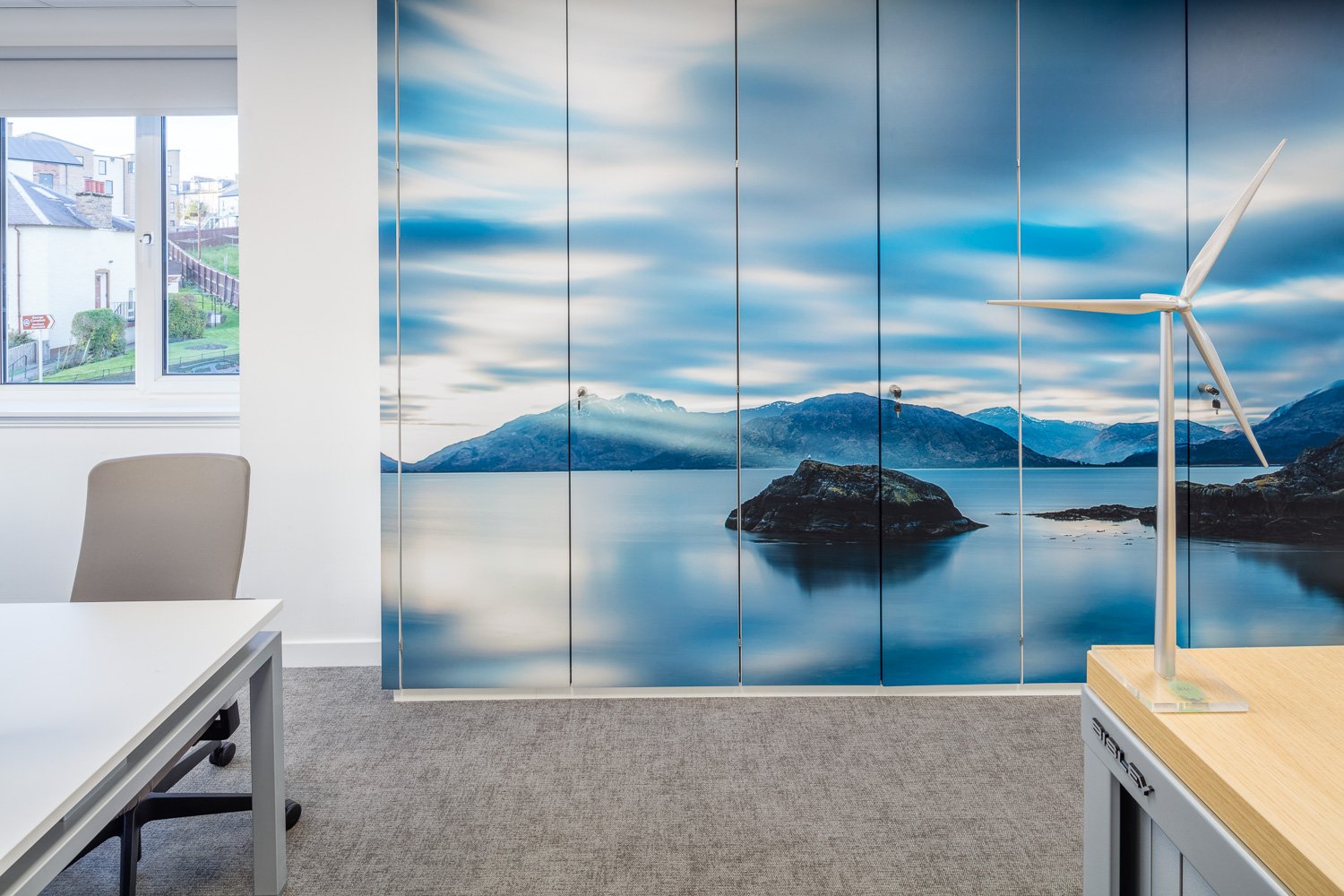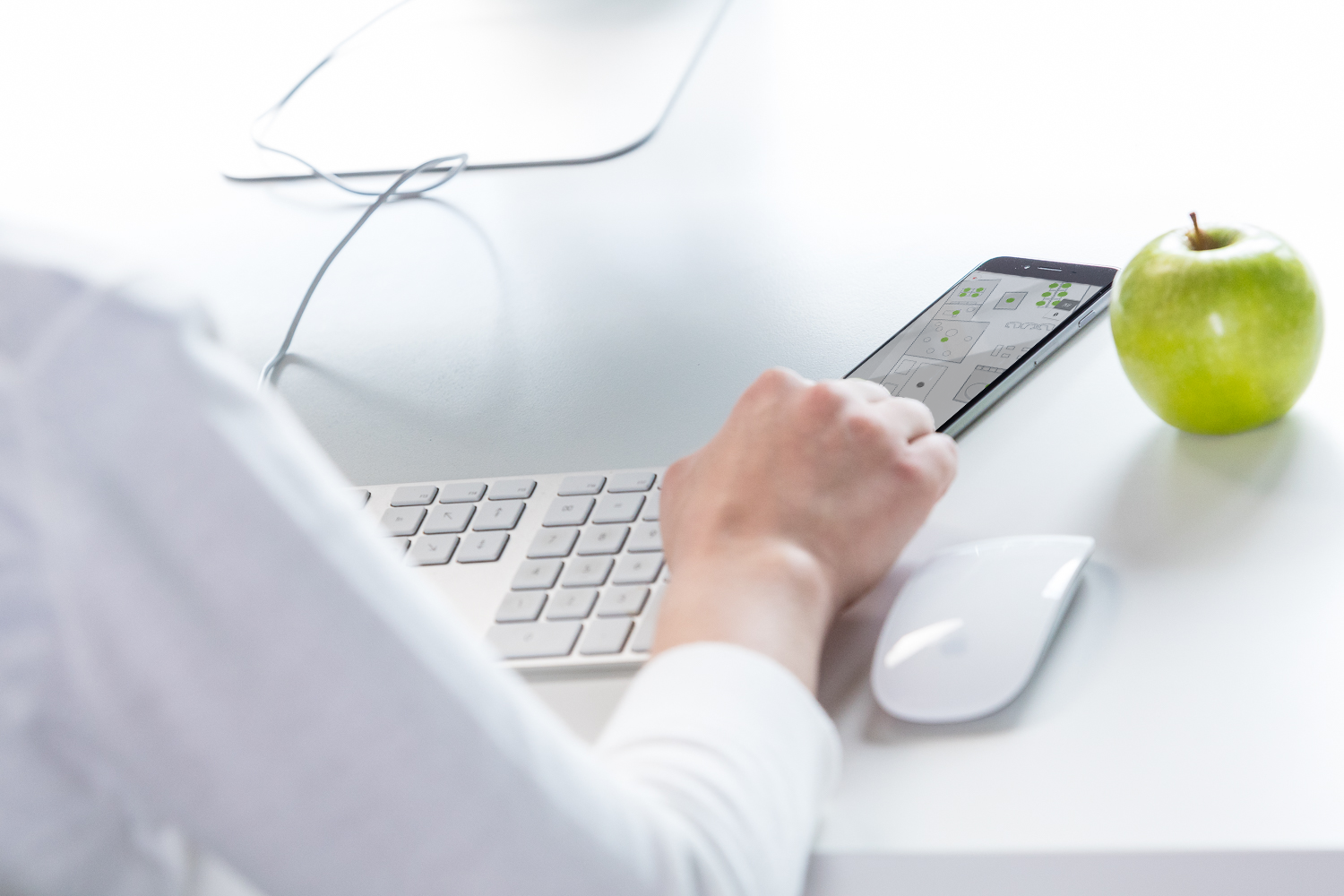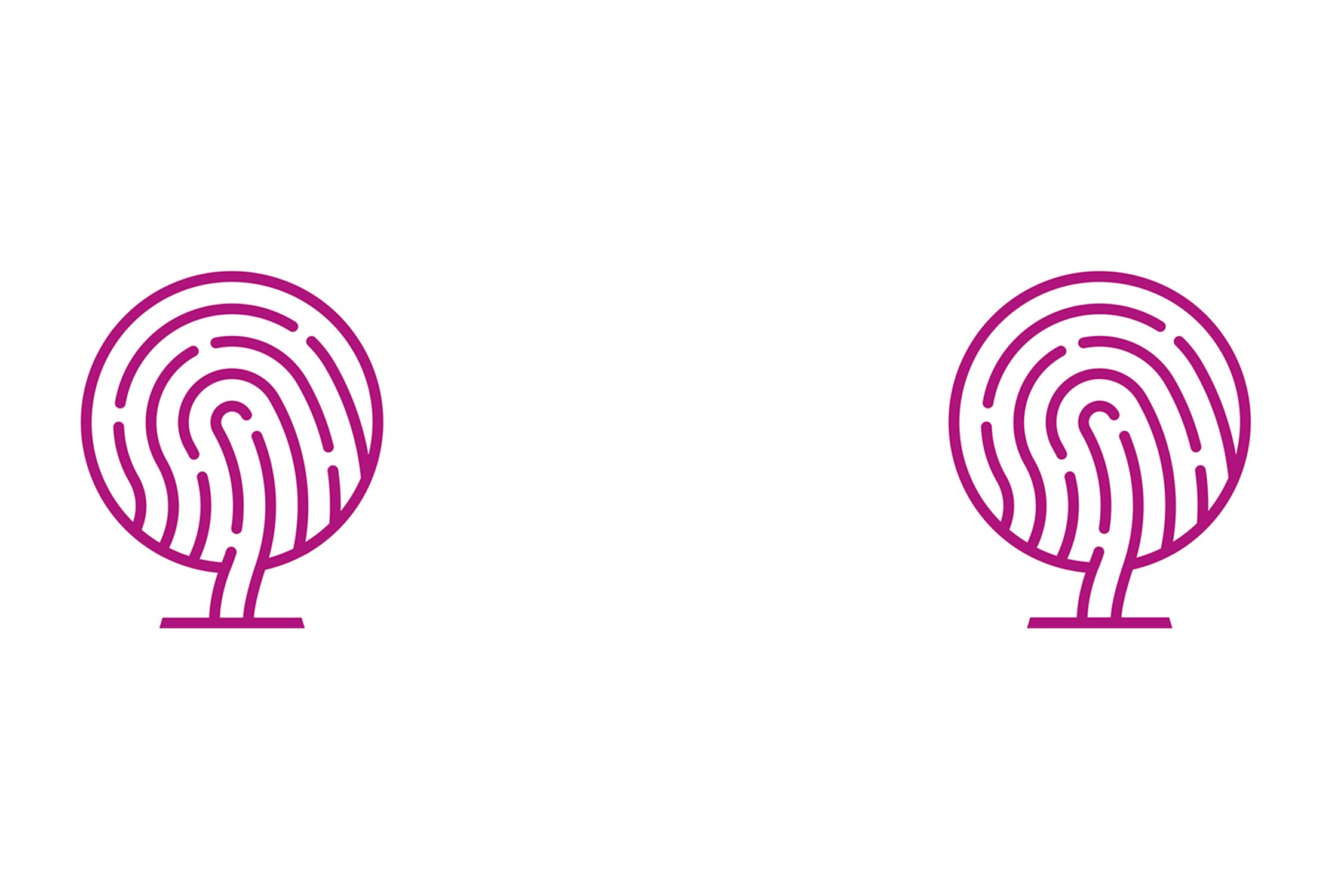The Office Is Dead. Long Live the Office!
Is the Office Dead? Not by a Long Shot! Just Transforming.
Here’s How to adapt Quickly
If I had a penny for each headline saying that office spaces are dead, I’d be too rich to care about this overdramatisation. The office has changed so much over the centuries that it’s barely recognisable now.
Has it died and then came to life again and again and again? Not really. It just transformed to meet new needs, to accommodate more or fewer people, and to respond to the demands of the workers.
This is exactly what is happening now. Along with the entire world, the office adapts.
There’s even a big upside to it. Remote work is by no means a new thing. Whether you call it remote working, working from home, flexible working, or digital nomadism, the concept has been here for a while.
And you know what? People have always loved it.
Even before the pandemic, 92% of Millennials (the majority of office employees) wanted the option to work remotely. At Amos Beech, we have always supported this. Our team has done it before the pandemic and we continued to do it during it. This flexibility is one of our best strategies to attract and retain talent.
On top of that, we have worked with dozens of UK companies, helping them adapt their offices to the ever-changing needs of their employees and create more flexibility. But more on that later.
First, let’s take a closer look at the office transformation that’s been in the works for years now and that is currently hastened by the COVID-19 pandemic.
What Have We Learned from Working from Home?
Nearly half of UK’s 30 million employees have worked from home during the pandemic. Most of them might not return to the office in the foreseeable future.
For some, it was the first time when they worked from some place other than an office building. Despite the initial shock and the fact that everyone (employees and employers alike) had to adapt and pivot at a moment’s notice, this work routine change revealed some interesting things:
Flexible Working Means Happier Employees
Yes, people are happier when they work from home. They have been so before the pandemic and that hasn’t changed.
The reasons are pretty easy to spot:
No commute (or a shorter commute when working from a nearby coffee shop).
More free time to spend with family and friends or to simply relax.
Less weariness: night owls fare much better when they can literally wake up 10 minutes before work starts instead of 1-2 hours earlier.
A better work-life balance.
Less money spent on long commutes.
Less pollution generated by those long commutes.
And that’s just the employee side. The employees have their fair share of benefits from flexible working:
With most of the staffers working from home, you don’t have to pay for large office spaces (they are STILL very expensive!)
You benefit from other cost cuts that may seem small but add up quickly: coffee and tea, electricity, cleaning, bathroom supplies, and more.
Remote employees are more productive.
Better yet, they work longer hours -- over 40 hours per week 43% more than non-remote workers.
When the employees are happy, they stay with the same company for longer. Lower staff-turnover means less money spent on recruiting and training new employees, as well as the priceless benefit of having senior personnel that was formed and trained in-house.
There’s no wonder then that remote working is set to triple in the next three years. Triple sounds huge, right? Right! But the survey that came up with this number also reveals that that only means 30% of the employees.
Of course, there are jobs that need an in-office presence. And there are departments that have to meet, at least occasionally. Meetings are still more productive when conducted in-person. Even this BBC story set in 2025 says it: there’s no way we’ll never see our colleagues in person again.
So we still need offices. That’s for sure.
But they have to change. They have to be safer. And of course, they have to accommodate flexible working and social distancing.
Let’s see how that can happen.
The Office Is Dead. Long Live the Office!
(Or How to Adapt Your Office Space to the New Guidelines)
We all know that social distancing rules are in place to keep us all safe. But this doesn’t mean that they don’t come with their own challenges, especially for business owners and office managers, who have to adapt spaces quickly and efficiently.
During the past few months, we spoke to a lot of office managers in Scotland to understand their needs and their concerns better. Out of all these discussions, one word emerged as an overarching principle: flexibility.
It’s what we mentioned above, saying that Millennials demanded it even before the pandemic. Office managers need it now.
Why?
Because this pandemic brought a lot of uncertainty. Offices are closing and re-opening as new outbreaks emerge and old ones die down. The rules and recommendations also change constantly, as we learn more about this disease.
Together with our design team, we have come up with a few principles that offer the flexibility managers need right now. Better yet, they are not quick fixes or quick solutions that may be obsolete by the time they are implemented.
These solutions are future-proof. They respond to the current need for social distancing, but without sacrificing branding in office design and without creating cold, hospital-like office environments that no one wants to work in.
Our goal was always to help our clients create a welcoming and safe workplace. Offices that people will love working in for years to come. Offices that respond to the increasing need for flexible working.
The HSE recommends that people who can work remotely should keep on doing so for the foreseeable future. Odds are most companies will keep remote workers remote even when the pandemic subsides.
So why not prepare right now for a flexible working future?
Check out some of the solutions we have already implemented for our clients:
1. Ensuring the 2 metres/6 feet Distance between Individuals
The current guidelines say that the distance between workers should be at least 2 metres. Our solution for this, when possible, is to have people working side by side or back to back rather than face to face whenever possible.
Of course, dividers should also be used. Screens are the easiest way to ensure this separation.
Pro tip: what if the current guidelines change and the distance is reduced to 1.5 metres? Our answer to this: mobile screens that can be easily moved and removed whenever needed.
Mobile screens on wheels can be easily created from a variety of materials and in a large variety of colours that match your branding and the existing colour scheme of the office.
2. Downsizing to Smaller Offices Means More Intelligent Space Use
A lot of our clients are thinking about downsizing, reducing their office space. Since they will have fewer workers coming into the office, this makes perfect sense.
Zoning – creating solo working spaces – is the perfect answer to making a smaller area work for your personnel.
Add easily cleanable surfaces and a smart workplace app like iotspot and you’ve got yourself a smaller, but more efficient space. With iotspot, your employees can easily schedule department meetings and reserve workspaces based on availability.
They can also choose when they come to the office based on how crowded it is. The real-time occupancy levels available in the app will help keep everyone safe and your costs down.
3. Multi-Use Spaces
With smart dividers, you can use the same room for meetings and for recreation. Effective dividers “break” the space, but without making its occupants feel caged.
More importantly, larger rooms are easier to ventilate, which reduces contamination risks.
4. Playing with Colours
Social distancing doesn’t have to look stern. In fact, you can easily delimitate spaces by simply using different colours.
The visual impact is significant – an easy way to tell people where they should sit and which chairs should be left empty. Or, better yet, an easy way to convey the maximum size of a group at the same table.
5. Create More Private Spaces
In the short run, private spaces help spread the dreaded virus. In the long run, they help people who prefer quiet spaces and privacy, work better.
Think about the average size of your teams and create conference rooms that are never too crowded, but don’t take up too much space, either.
6. Adaptable Furniture
Lightweight, kinetic, and flexible furniture is the key to an office space that is both friendly and safe. The furniture needs to be easy to move when the need to reconfigure a space arises and easy to clean.
Extra attention to finishes is also recommended. For instance, microfiber sofas and chairs are very easy to clean and to maintain.
The Amos Beech Advantage
It’s been years since we first started helping Scottish companies reconfigure their floor plans to accommodate work flexibility. We came up with architectural, design, and tech solutions for them, to offer 100% custom-made turnkey solutions.
This gives us an upper hand in helping our clients re-design to accommodate social distancing measures. Our workplace consultancy team can create end-to-end solutions for any type of commercial space.
From space evaluation, audits, future needs projection, office design, office furniture consultancy and supply, office refurbishment, to all-trades contracting, installation, and the final handover – we can handle any type of project, irrespective of size.
Need a custom solution that’s both pandemic-proof and future-proof?
We’re just a click away:
How the Pandemic has Shaped the Future of the Office
COVID-19 was a wake-up call for everyone. From individuals to families, from startups to blue-chip companies - the effects of COVID-19 have largely disrupted nearly all aspects of life, provoking everyone to rethink how we live and interact with each other.
Arguably, the most affected are businesses of all sizes. In the span of a few weeks, they had to pivot their operations and change the way they work entirely. Some offices are still empty, while in others life spurs back.
One thing is certain: the future of the office is unclear. Will we stick to remote working where possible for the next few years?
Did the pandemic make us more aware of the advantages of remote working -- enough to carry on working outside the office even after the danger is gone?
Are people happier working from home or do they crave their normal office life back?
We’ll try to answer these questions and others in the following article.
A Growing Trend Amid a Health Crisis
It’s safe to say that the remote working idea was here well before the pandemic struck.
Before COVID-19, some companies were already restructuring and redesigning their office space. You can say it was an emerging trend that was slowly gaining traction. The pandemic has accelerated the process and turned a trend into a normal approach almost overnight.
Sixty-one percent of global companies had some sort of remote working policy before the pandemic, according to a global survey carried in 2019 by Merchant Savvy.
Image Source: Merchant Savvy
Notes: The Netherlands does not have data from 2008 (it only started submitting home working figures in 2014).
By 2018, the United Kingdom was among the top five countries with the highest number of remote workforce - and this is way before COVID-19.
The UK work-from-home situation before the coronavirus showstopper
Number of people working at or near home in the UK, January to December 2019:
(Image Source: Office for National Statistics)
For the 12-month period from January to December 2019, of the 32.6 million people in employment, around 1.7 million people reported working mainly from home, with around 4.0 million working from home at some point in the week prior to the interview. Meanwhile, 8.7 million people say they have worked from home and 2.9 million people work either in the same grounds or buildings as their home or use home as a base.
Fast-forward to 2020 and these numbers have obviously risen. It’s not rocket science that COVID-19 protocols have forced businesses to allow their employees to work from home in an effort to curb the spread of the virus.
The number of companies with staff working from home, especially in Europe, has risen to 88 percent compared to four percent before the health crisis, according to another study.
The changing attitudes and ever-increasing options for networking online coupled with the goal to attain a perfect work-life balance have significantly contributed to the prevalence of remote working.
As the world looks towards the future with optimism, companies now have to determine how many of their employees should report to the physical office versus what percentage will work from home.
It was predicted that by 2020 half of the UK workforce alone would be working online. Now, thanks to COVID-19, we have come to see remote working as an integral part of the future of work.
Rethinking The Office Set-Up
Ever wondered why office work gets such a bad reputation when it comes to coronavirus transmission? It’s simply because the pre-COVID office can no longer handle the number of employees that it did before if social distancing is anything to go by.
We need fewer people in the office. It’s something we’ve said way before the pandemic. The office as we know it needs to be completely re-designed. Of course, we can’t shut down all offices completely.
Nor can we live in lockdown forever.
To survive, we need direct contact, which means going back to the social order of things.
But will the world ever be the same after COVID-19? Undoubtedly, some changes are here to stay, and one of them is remote working.
Why? Because working out of the office has gained a lot of fans even before the pandemic.
Eighty-nine percent of employees working from home believe that it has reduced their expenditure. Very little or no more commuting, no daytime meals/snacking (lunch and coffees) -- all contribute to less money spent and a better quality of life.
savings in pounds per week per employeee
It is estimated that the average worker saves £44.78 thanks to remote working. Companies also admit to benefits in terms of reduction in office costs. When you consider that office rent in Scotland is, on average, about over £30 per square foot per month, then a reduced workforce in the office is a huge expense reduction.
The benefits of remote working are palpable for both workers and employees. Still, this relatively new concept has its set of disadvantages in terms of organisational culture, employee teamwork, monitoring, etc.
The truth is that the social aspects of the physical office are beneficial. There is something powerful about meeting workmates and clients in a physical space, sharing jokes, exchanging ideas, and having a meal together.
These aspects help build a strong working relationship and positively influence organisational culture.
Presently, 82 percent of employees admit to reduced focus while remote working. One in five workers admit to struggling with loneliness, and 67 percent admitted to stress resulting from overworking.
The post-pandemic world calls on us to examine the pros and cons offered by both solutions (physical office versus remote working) and come up with an agile approach to work.
Preparation for Staff Comeback
The future of work entails providing employees with the option to work from home or the office. Ninety-eight percent of workers like working remotely and 63 percent of workers feel that they are more productive when working from home.
Therefore, the post-pandemic world calls for companies to leverage the benefits accrued from working from home and still maintain a physical space where employees can meet physically.
You know, the best of both worlds.
But to offer solid options and prepare for the staff return (even if it’s a partial return), office managers need to re-think the working space.
Luckily, there are a variety of options that companies can utilise in the physical office to minimise the risk of infection.
One solution involves setting the office layout to include a 2-meter space between employees. But the distance does not have to have that chronic feeling we get from hospitals.
We know that this is easier said than done. Or perhaps it’s easier for us to speak of it since this is what we do best.
At Amos Beech, we have built a name for ourselves by creating bespoke, cost-friendly interior office design solutions that offer an aesthetically-pleasing look and an ambiance that motivates the modern workforce and inspires out-of-the-box creativity.
Traditional offices partitioned workers using cardboard or plexiglass dividers. However, in the post-COVID world, creativity has to take center stage. Partitions need to look like deliberate design options, not something built solely out of necessity.
Some companies have already transitioned to open space offices. But if you are still preparing for your staff’s return, you can re-create the office space using desk partitions and office dividers. Floor-to-ceiling partitions, for instance, can light up a place and serve a practical purpose, too.
This redesigned workplace can be utilised to help with maintaining the right occupancy levels and with social distancing at the same time. All for making sure your office is COVID-secure and still a fun place to work in.
The future office space also has to uphold stricter hygiene rules. You can begin by introducing a clear desk policy, where surfaces are adequately cleaned daily. Additionally, make sure you place hand sanitisers at touchpoint areas (for example, in the reception area, in meeting rooms, near doors, kitchens, tea prep areas, and near printers).
COVID-19 is spread by touching surfaces or objects. Therefore, the future office has to sanitise high-risk surfaces and objects. Don’t worry; we don’t have to become sanitation experts for this. The good news is that there are solutions to this. One of them is using non-septic antimicrobial surface wraps for door handles.
You can check out more tips for safe office spaces here.
Apart from recalibrated spaces and increased hygiene, returning to the office will also come with a change in shifts (no more 9 to 5) to reduce occupancy levels and maintain safety.
Reopening the office after COVID-19 does not have to be expensive or nerve-wracking. There are simple, cost-effective solutions, and when you incorporate remote working among them, you are likely to build a healthier team.
What Happens When the Vaccine Is Rolled Out?
There is hope for tomorrow as scientists around the world have been busy looking for a vaccine. To date, there are over 115 vaccine candidates, of which 78 are confirmed as active, and 37 remain unconfirmed.
There’s clearly light at the end of the tunnel as out of the 78 actively confirmed vaccine options, 73 are already at the preclinical stages.
Once the vaccine is out, will things go back to normal at the office? A famous quote says that:
“those who fail to learn from history are doomed to repeat it”
The post-COVID era calls for us to draw lessons and make life-altering changes.
Change in the workplace means introducing more collaborative spaces and keeping work from home an integrated part of our working life.
Global companies have already embraced the alternative to work options. Facebook introduced a remote-working policy that allows their staff members to transition to remote work permanently.
The social media giant also plans to create positions that will enable remote hires. Google also adopted a remote working policy that will allow for only about 30 percent of its employees to return to the office.
Google opted to redesign the office space to ensure its workers remain at least two metres apart. The company also made changes to its recreation amenities and imposed a temporary closure to its world-class cafeteria.
If you look at how the giants are still preparing their offices, one thing is clear: the new normal will involve at least some remote working.
The Future of Work & Office
The 9 to 5 as we know it (or knew it) now is a trend that was created in the industrialisation era.
Back then, business leaders advocated for daily commutes because it made perfect sense to have everyone under the same roof, given the lack of tech solution to support hour tracking and communication.
Even with the advancement of technology and internet connectivity, the 9 to 5 phenomenon remained largely unchanged as most business owners and managers felt the need to supervise their workers to ensure productivity.
But times have changed, and COVID-19, as well as the environmental issues we’re now facing (a complex topic to be debated another time), call for business leaders to embrace alternatives to in-office work.
Remote working has the potential to increase productivity as it reduces the stress experienced from commuting and offers employees the freedom to work from anywhere.
Today's workers (at least 70 percent of them) feel that a job ad that offers flexible working is more attractive. Also, 89 percent of workers admit that their productivity and effectiveness significantly improved due to flexible work schedules.
Therefore, companies stand to gain by adopting flexible work approaches. Yet only a handful of jobs are advertised as being flexible. Perhaps it’s time we learned a valuable lesson from this pandemic and, instead of craving our “old” lives back, take a breather to consider how to improve our “new” lives, especially where work is concerned.
Although unlikely based on the information we have so far, COVID-19 may disappear within a year or two. But this doesn’t mean there’s a shortage of reasons in favor of remote or flexible working.
Urban pollution is primarily a result of human activities. Anthropogenic factors such as transportation, light and noise pollution, and waste exacerbate global environmental threats. By re-thinking the future of work, companies will contribute to a change that has far-reaching consequences:
Less office waste
Reduced fuel use (minimal commute to work)
Reduced greenhouse gas emissions
Reduced energy use (less office space means less lighting and less use of electricity)
Case Study: Amos Beech
At Amos Beech, we strongly believe in practicing what we preach. So we’re not urging you to consider adapting your work environment from our crammed office.
Amos Beech was one of the first Scottish companies to adopt remote working. We began implementing remote working years ago and never looked back. Our staff is located across several Scottish town and cities, so it made perfect sense for us to implement a flexible working policy.
Driven by innovation and the need to help businesses get the best out of their office space and workers, we wanted to share our knowledge in making the most out of your office space. So we have set up iOtSpace, a worklace consultancy that effectively manages flexible workspace environments with the iotspot® smart workplace platform.
The iOtSpace app works by showing real-time availability for each workspace. The app has a color-coding system that helps you occupy a workspace on the spot or book it in advance from home.
When you use the app, the color green indicates which workspaces are free. Blue is for reserved space and red for occupied space. The app also shows you who is using what workspace. This way you can coordinate with your team better and avoid cramming the office needlessly.
The Wrap Up
COVID-19 has made remote working an integral part of the future workplace. Before that, businesses were still debating about the pros and cons of remote working. Some business leaders were concerned that remote working could negatively affect their employees’ productivity, organisational culture, and creativity.
However, the pandemic brought the world at a near standstill and brought more attention to remote working. The debate was suddenly over and even the most avid remote work critics were forced to implement it.
So far, remote working has been convenient for both employees and employers, not to mention life-saving and money-saving. There have been reduced absenteeism rates and improved employee wellbeing. Moreover, the positive impact of flexible workplaces will probably motivate most businesses to maintain this approach to work in the post-COVID era.
As the world opens up gradually, the future of office work will leverage technology and innovative designs to find the most appropriate and effective way of continuing with work without harming productivity or the employees’ health.
Working from home & social distancing in the office?
2020 has seen many of you now working from home due to these unprecedented times. Leaving the world of open-plan office behind….
Whilst for some, working from home is a welcome break from the daily commute and like the solitude and the peace to focus on work without distraction, others also like the social aspects of the office. We are social, we like the company of others, no more so than in the office. We thrive on discussion, exchanging ideas and collaborating, however now we have to bring what we have learnt from social distancing in our day to day life during the Covid19 lockdown into the office. Perhaps for some of us this will be the new normal – a balance between working from home and in the office.
Whether we can achieve this balance or whether we want or need to return to the office full time, we will need to feel as safe in the office as we do at home. How can we make that happen?
Working from home and returning to the office after the Covid19 lockdown
Now is the time to rethink the office, to ensure the workplace is productive and safe for staff and customers. Here at Amos Beech we were either working from home or have been furloughed just like most of you. However, the design and fit-out team have been thinking about short, medium and long term solutions for after the Covid19 lockdown, to help you with the preparation for staff returning to the office.
Office layout and occupancy levels
Social distancing in the office follows the same guidelines as out of the office – to avoid unnecessary closeness with others by allowing employees to remain 2m apart. This may mean reducing the number of employees in the office at any given time, so some of your staff need to continue working from home.
Assigned desk social distancing layout return to the office after Covid19 lockdown
To organise this the iotspot ESD desk booking system can be an outcome. The smart workplace platform can be utilised to help with social distancing in anticipation for people returning to work.
Screens between desks and office dividers
In the office we need to minimise disruption by using alternate desks with individuals not directly facing each other and introduce high clear perspex screens between the desks.
Samuel Bruce desk dividing perpex screen solutions
Contact the design team for help with your office layout:
Hygiene
In addition to the above, hygiene becomes even more important than it already was. You may for instance need to introduce a clear desk policy, allowing surfaces to be properly cleaned on a daily basis. Also introduce hand wash facilities in tea preps and break rooms and provide hand sanitisers throughout the office, especially at high touch point areas such as near printers, in tea prep and break out rooms, at lifts and entry and exit doors.
Hand sanitiser stations
NanoSeptic Antimicrobial Surface Wraps for Touchpoints
Contact the operations team for more details about hygiene products:
Returning to the office after the Covid 19 lockdown is very much work in progress
For us at Amos Beech the current situation is just as new for us as it is to you, but we are committed to help you return to the office in a safe and pleasant way. Our design team is keeping up to speed as much as possible by attending webinars of the world leading office specialists and operations follow all the latest developments from the office and facilities industry.
In addition to that we have taken the initiative to set up a sharing platform where all involved in the office interiors, facilities and fit-out sector can share ideas and solutions. We advise you to follow this initiative to keep up to date:





